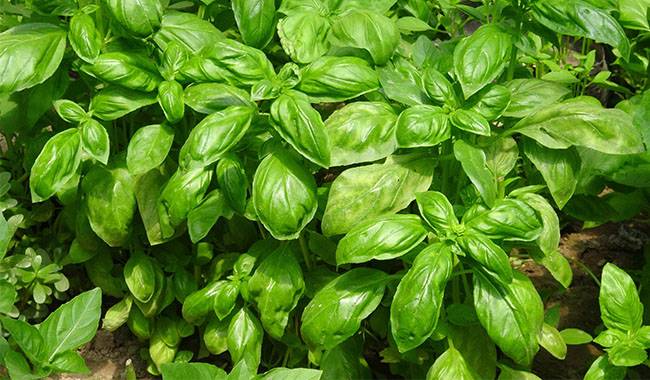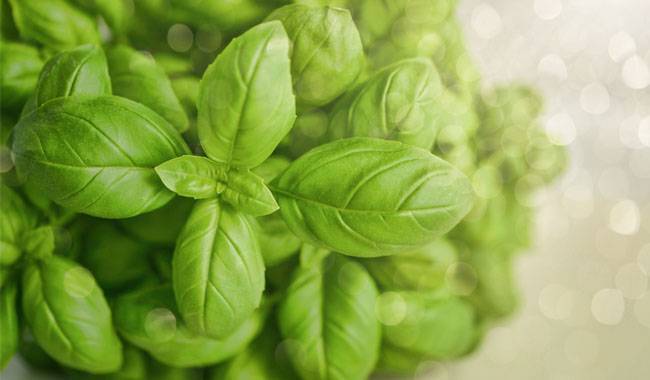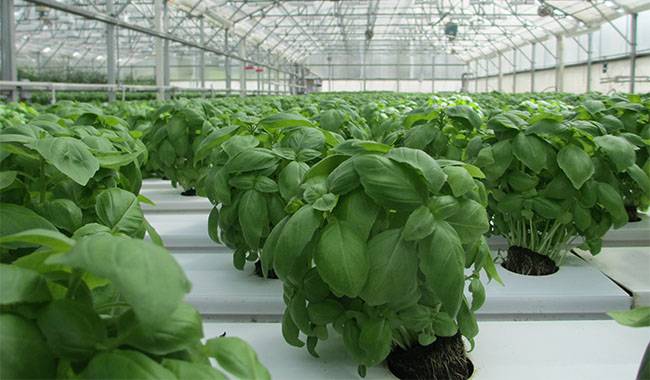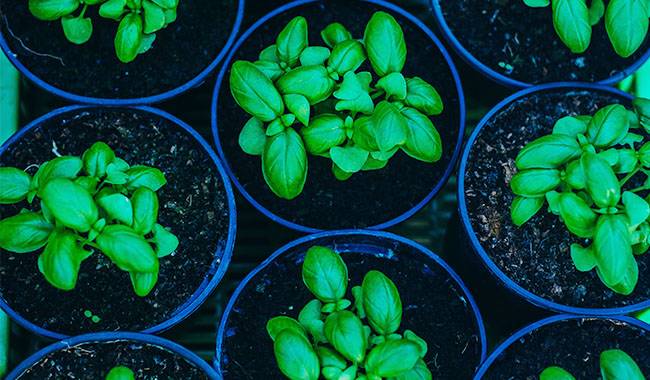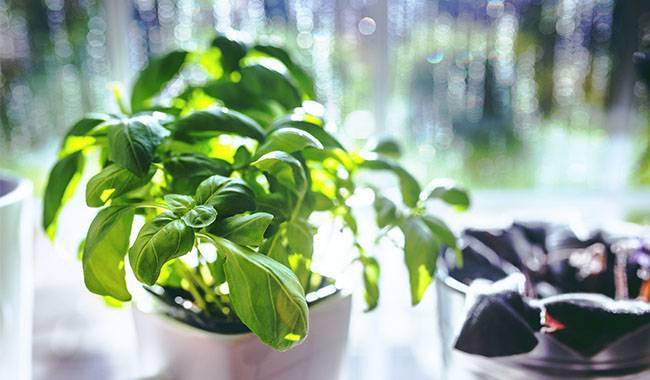
Basil is an annual plant that is very warm and pro-photosynthetic because of its tropical home.
So how to grow basil indoors? This article provides the answer.
In our open area climate zone, it grows only in the summer, but it grows in the home all year round.
Therefore, if you decide to grow basil on your windowsill, you will have the opportunity to pamper yourself and your loved ones with fresh vitamins, because this bush is a real “storehouse” of substances useful for the human body.
In addition, it has a unique flavor, so add the leaves to various dishes (soups, meat, fish, salads). Basil food has a special mouth-watering taste.
How to grow basil on the windowsill? It is not difficult at all, but you should remember some rules of planting and take care of the characteristics of this crop.
USEFUL INFORMATION
There are many reasons to grow indoor herbs, vegetables, and berries: the growing popularity of gourmet home cooking and the demand for fresh, local, and home-made products.
Basil pesto, chicken with rosemary, pizza sauce with fresh oregano, salmon with a tarragon, salad with cilantro – aren’t these reasons to grow your own herbs and vegetables year-round?
As technology advances, consider that there is a technology that can grow indoors without sunlight, and that light is called a grow light.
The development of soil and soilless substrates and freestanding hydroponic systems has evolved to the point where growing herbs in a special corner of your home is a way to add new aromas, flavors, and even extra profits that have never been part of your life.
In this article, we will consider the use of herbs to create your own home garden as a traditional starting point for home gardeners.
Traditionally, herbs were grown on windowsills, under kitchen fluorescent lights, and under incandescent lights next to orchids.
Even the sunniest windows are sometimes only enough for a small, sparse harvest of a pinch of rosemary in February and a few basil leaves in the New Year.
Standard fluorescent lights can help the grass survive the winter, and can even produce a certain crop depending on its luminosity.
If the lamps are more than half a meter away from the plants, the biggest fact is that in order to grow enough indoor crops, they need bright lighting for a long time.
Herbs also need strong light to produce the essential oils that give them their unique aroma and flavor.
Rosemary dies slowly on a windowsill in six hours of sunlight, and it won’t even come close to the smell of rosemary flourishing in the brilliant summer sun.
The growing interest in indoor cultivation has led to the development of tools that allow for more efficient growth of culinary herbs.
When placed correctly, the new cold fluorescent grows lights with special reflectors will do much better than ordinary household lights in the kitchen.
When this is combined with the modernization of hydroponic systems, it turns out that the modern gardener has the opportunity (if there is enough space, of course) to harvest his favorite herbs (as well as vegetables and berries) year-round enough to share with friends and even to sell at local markets.
3 WAYS TO GROW BASIL IN POTS
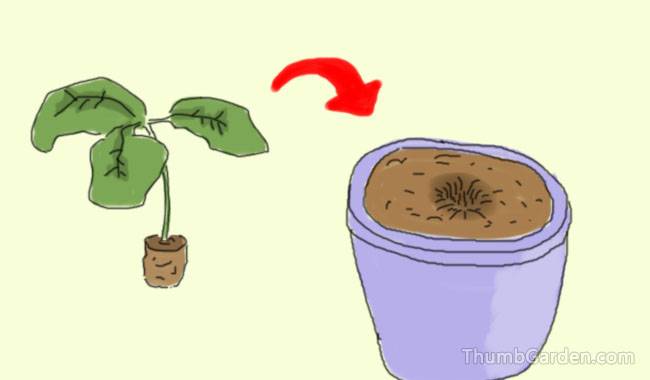
Transplant the adult plant into a pot
This method is suitable for those who grow basil in vegetable gardens or home farms. Young bushes that have not yet flowered are carefully dug up along with small soil balls and placed in pots.
After a short growing season, the basil begins to flower. To pull out the flowers and cut off the young shoots, they are useful for propagating cuttings. This method can be called “open ground transfer”.
Cultivation by cutting
The method of cultivation by cutting is not complicated. The cuttings can be young shoots or the tips of adult plants.
They should be placed in any container with water for about ten days. As soon as the roots appear – the plant can be planted in a pot.
In just a few weeks you will be able to taste the first greens. This plant will be ready for use at home in 3-4 months.
Grow from seeds
There are advantages and disadvantages of growing basil from seeds. The disadvantage is that the shrub will take much longer to grow than when propagated from cuttings. The first vegetables will be tasted no earlier than 8-12 months. And the advantage is that such a bush will be used for a longer time.
THE BEST TIME TO PLANT BASIL IN POTS
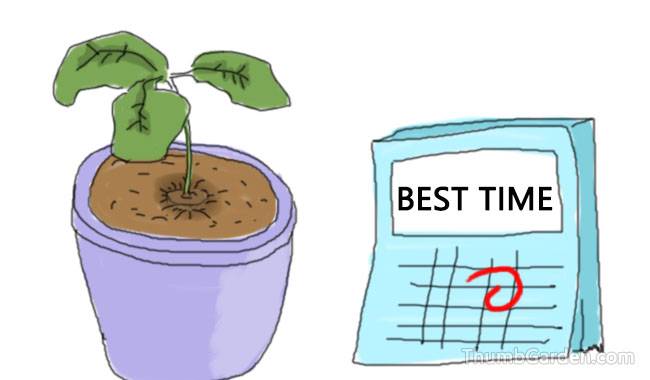
Basil can be grown in pots all year round. However, at certain times it will require more attention, patience, and strength.
Since it is a subtropical plant, it requires special conditions for growth and development all year round.
It is very sensitive to drafts and reacts very negatively to them. It constantly needs sunlight and warmth.
Therefore, you must work hard to keep the plant alive during the cold fall and winter months.
On the coldest days, you may have to wrap the basil pots with plastic wrap. During shorter days or cloudy weather, the plants will need extra light.
Therefore, it is recommended to plant basil in early March, when sunlight hours have increased and the warmth of the sun is more pronounced.
Such natural conditions help the plant in its active development phase. And in the summer, it will no longer be afraid of basil.
CONTAINERS AND SOIL
Long wooden containers or slender terra cotta pots are perfect for growing basil shrubs at home, provided they are large enough, as the root system will grow profusely.
It is best to heat the soil before planting and fertilize it with mineral fertilizer or humus concentrate.
The chosen container should be drained to prevent fluid stagnation. For growing the plant, black and sandy loam soils are suitable.
FERTILIZATION AND WATERING
The plant prefers regular and moderate watering. As the soil drains, water the basil, about every five days.
The soil should be slightly moist. If you are growing a crop at home, you do not need to water too much as this will only harm the basil.
If the soil does flood and the plant begins to mold, take appropriate action immediately. Eliminate the infected leaves and stems to avoid further spread of the disease to healthy areas. Then, dust the ground with ash and loosen it up.
Basil should be watered daily, preferably in the morning. On hot summer days, you can water twice a day (during the day). Spray the bushes sometimes and perform this step every day in summer.
Once every 30 days you can use a catch-up fertilizer for your bushes. Feed basil with a general-purpose fertilizer such as Basil Mate or organic compost.
In order to take care of the plants, it is important to thin the soil regularly every three days. Thanks to this procedure, sufficient oxygen enters the ground, which is very scarce for plants living in the house.
HOW TO GROW BASIL FROM SEED: BASIC STEPS
There are several species and varieties of the Basil family. When planting in pots, choose seeds of species with low growth rate and vigorous growth.
In the initial stage, plant the seeds in small plastic containers or small pots. As the plant grows, after 2-3 full leaves appear, move it to a larger container of larger size.
Be very careful so as not to damage the fragile young roots. You can shorten this process by immediately planting the seeds in a large pot (with a capacity of about 1 liter).
Don’t forget to put a drainage spout at least 2 cm (0.78inch) high at the bottom before filling the pot with soil. The soil should be specially prepared from several important ingredients: one part humus and two parts coconut fiber (or peat).
Be sure to water the entire mixture with liquid mineral fertilizer. The soil for basil requires fertile and easily absorbed soil.
The selected basil seeds must be sterilized for a period of time, in a manganese solution for two hours.
Only afterward can they be planted in soil that has been well watered previously. Each seed is planted at a shallow depth of no more than 1cm (0.39inch), at 10cm (3.93inch) intervals.
The surface was then completely covered with a transparent film and not removed until the first sprouts appeared.
After about ten days, the first shoots will appear.
If the room where the seeds are germinated is kept at a constant temperature of 20-25°C (68-77°F), the first shoots will soon appear in about 10 days.
As soon as the young shoots appear, transfer the pot to a room that is always warm and well-lit.
Basil is very fond of “water treatment”. It should be watered regularly once a day. In the hot summer months, this process can be repeated in the morning and evening. Spraying with room temperature water will not be superfluous.
Basil is a subtropical plant and needs to be exposed to sunlight for as long as possible. Sunlight and warmth are simply vital for the proper growth and development of the plant.
Under favorable conditions, the culture will sprout and branch quickly. The main thing is that the air temperature does not fall below a high temperature of 20°C (68°F) and that no drafts occur.
The soil under the mature basil needs to be rich in oxygen. This is loosened every 3 days. It is also advisable to apply organic or universal fertilizer to poor soils.
After about a month and a half, the first spicy vegetables can be tasted. Mature leaves should be carefully pruned, leaving at least three leaves on the bush. In order for the basil bush to grow wide but not high, the topmost leaves should be pruned.
PLANTING CONDITIONS
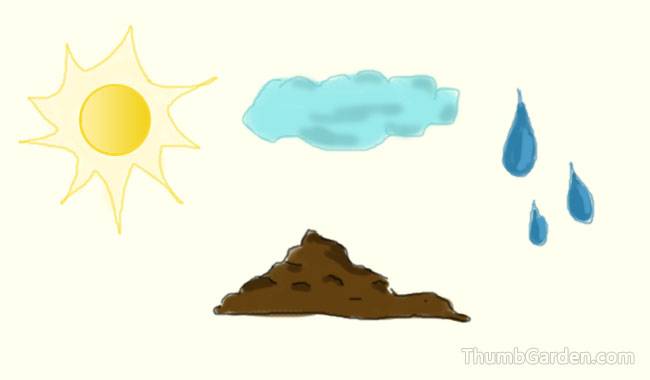
Growing basil indoors is a surefire way to fill your kitchen with the fresh smell of your garden. The plant grows well if the following conditions are met
Find a sunny spot
The kitchen seems like an obvious place to store delicious spices, and a windowsill there can be a good choice. Any bay window will do as long as it is well lit, but a south or southwest-facing window is ideal.
Aim for a stable temperature
Basil prefers a mild climate, preferably 20°C (68°F). Therefore, keep basil away from air conditioners, heaters, vents, and other areas that tend to produce large temperature fluctuations.
Water your basil once a week.
Water your plants weekly with cool (room temperature) water. If your home garden is not too large, you can water the herbs in your kitchen sink.
Prune the plants.
If you notice brown leaves, pick them off so you don’t damage the rest of the basil. Experts recommend regularly picking or pulling the outer mature leaves to make the plant grow more compact and regular. This is not a difficult task, as you will do it every time you start preparing a delicious medicinal meal.




